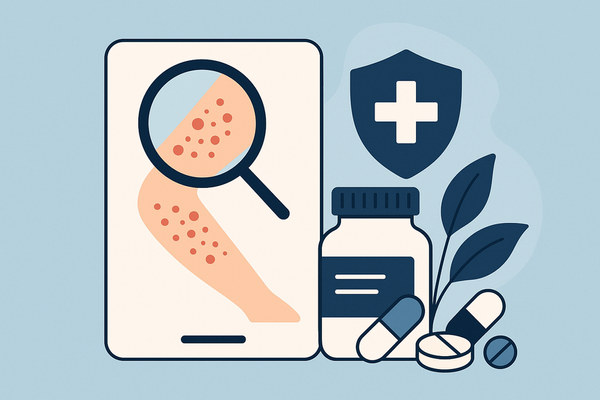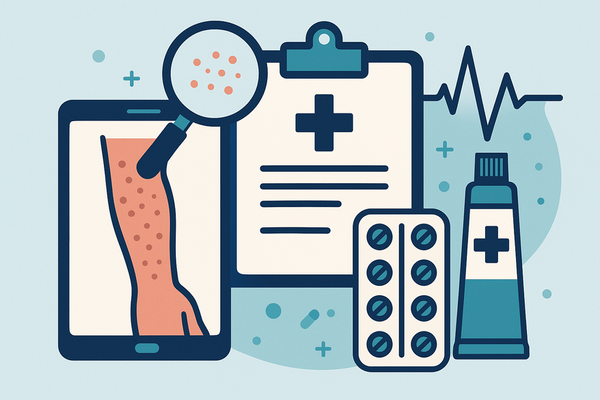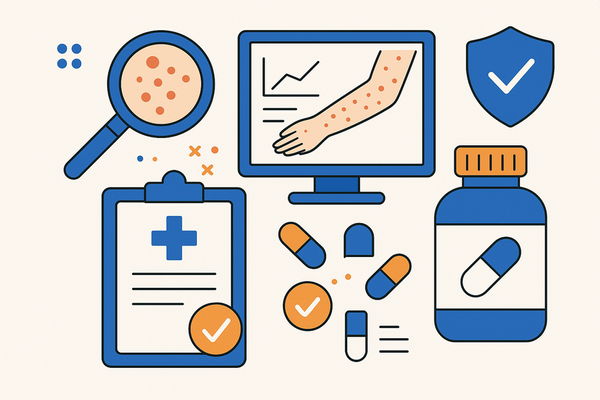Blending AI Rash Reports with Professional Care: A Comprehensive Guide
Learn how blending AI rash reports with professional care can enhance diagnosis speed, accuracy, and treatment. Discover the balance between AI and clinician expertise.
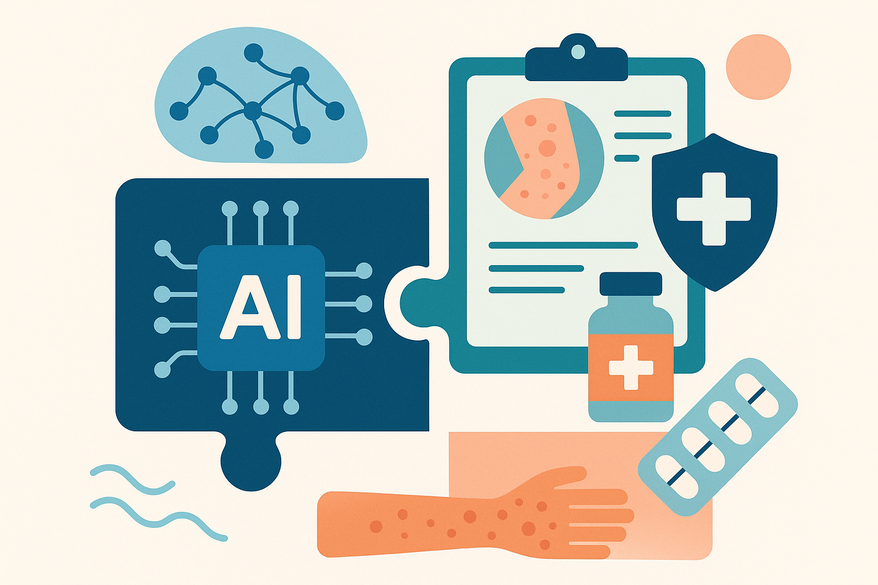
Estimated reading time: 8 minutes
Key Takeaways
- Speed and access: AI-driven rash detection delivers instant preliminary diagnoses, reducing wait times and expanding reach.
- Clinician oversight: Professional care adds nuance—patient history, lab tests, and personalized treatment.
- Best of both worlds: A collaborative approach blends AI’s efficiency with human expertise for safer, more accurate outcomes.
- Routine integration: Regular AI skin scans paired with proactive follow-ups improve monitoring and adherence.
- Future-ready: Emerging models and EHR integration promise even more personalized, predictive dermatology.
Table of Contents
- Section 1: Understanding AI Rash Reports and AI Rash Detection
- Section 2: The Role of Professional Care and Holistic Assessment
- Section 3: Strategies for Blending AI Tools with Professional Care
- Section 4: Practical Implementation in Daily Health Routines
- Section 5: Case Studies & Real-World Examples
- Section 6: Future Trends and Innovations in AI in Dermatology
Section 1: Understanding AI Rash Reports and AI Rash Detection
AI rash reports rely on smartphone and clinical images processed by convolutional neural networks (CNNs). These models perform image segmentation, pattern recognition, and compare features against vast medical databases to suggest possible diagnoses. For deeper insights into this technology, see our guide on how AI diagnoses rashes.
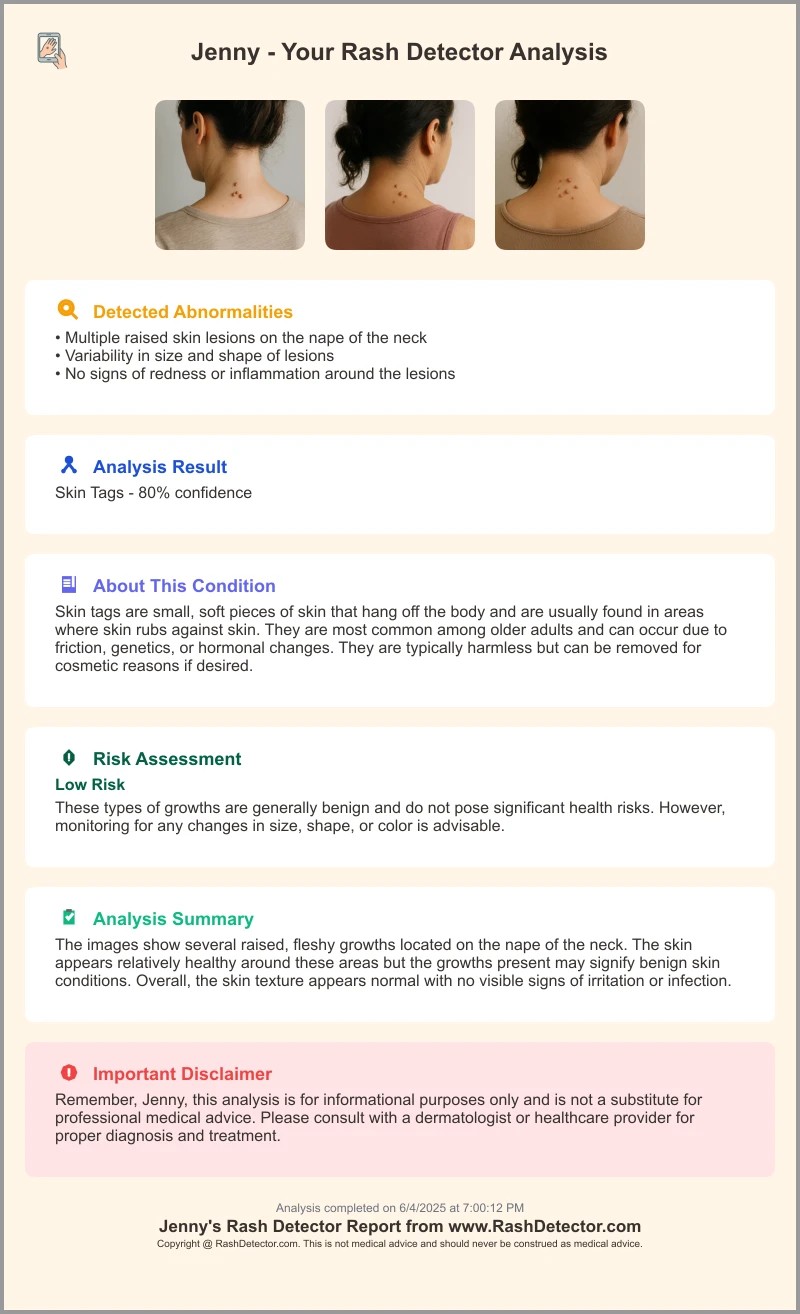
Data Inputs
- Image features (color, shape, texture)
- Patient-reported symptoms (itch, pain, duration)
- Basic medical history (allergies, existing conditions)
Algorithmic Process
- Image segmentation separates rash from normal skin
- Pattern recognition matches features to known conditions
- Confidence scores indicate likelihood of each diagnosis (interpreting rash diagnosis scores)
Benefits of AI Rash Detection
- Instant preliminary diagnosis—cuts wait times from weeks to minutes
- Increased access for rural or underserved areas via teledermatology
- Continuous monitoring for early intervention and progress tracking
Limitations of AI Rash Reports
- Potential misinterpretation of rare or atypical conditions
- Accuracy varies—around 70% for common rashes, lower for complex cases
- Risk of over-reliance, which may delay follow-up care
Section 2: The Role of Professional Care and Holistic Assessment
Professional care involves a thorough clinical assessment by dermatologists or trained providers. Clinicians factor in patient history, comorbidities, and physical exams beyond what photos can show. They validate AI insights, confirm or refine diagnoses, and customize treatment plans.
Validating AI Insights
- Interpret AI-generated rash reports in clinical context
- Compare AI suggestions with lab results or biopsies
- Adjust treatments based on the full medical picture
Continuous Monitoring and Follow-Up
- Track treatment response and side effects
- Address complications like infection or scarring
- Maintain patient safety with in-person or telehealth check-ins
Section 3: Strategies for Blending AI Tools with Professional Care
Step-by-Step Integration Guide
- Select a validated AI-powered app with secure encryption and simple interface (for example, Rash Detector).
- Establish a scan schedule—weekly or bi-weekly skin checks.
- Review AI-generated reports: note suggested diagnosis and confidence scores.
- Schedule proactive check-ups when AI flags moderate-to-high risk.
Collaborative Model
- Share AI outputs with providers via secure patient portals
- Use telemedicine platforms that sync AI data and schedule follow-ups
- Foster a feedback loop: clinicians refine inputs, improving future accuracy
Best Practices
- Data privacy: choose HIPAA-compliant apps with end-to-end encryption
- Maintain balance: AI augments but does not replace clinical evaluation
- Always consult a professional for persistent, severe, or unusual rashes
Section 4: Practical Implementation in Daily Health Routines
Routine Integration
- Add skin scans to morning or evening self-care, alongside brushing teeth or skincare steps
- Log symptoms and photos within the AI app for trend tracking
App Selection Criteria
- Clinical validation and peer-reviewed accuracy metrics
- Positive user testimonials and case studies
- Regulatory clearances (FDA, CE mark)
Virtual Health Consultations
- After an AI alert, book a teledermatology session
- Upload AI report and images before the visit for provider review
- Update both the app and provider records with treatment changes
For tips on integrating AI monitoring into your routine, see: integrating AI monitoring into your routine.
Section 5: Case Studies & Real-World Examples
Case Study A: Remote Clinic Efficiency
Setting: Rural health center without onsite dermatologists
Result: 60% drop in unnecessary referrals and faster treatment starts using Maayu AI
Case Study B: Acne Management via Teledermatology
Program combined AI alerts with scheduled follow-up calls
Outcome: 25% boost in medication adherence and patient satisfaction
Key Lesson: Highest success when AI tools supplement clinician judgment rather than replace it.
Section 6: Future Trends and Innovations in AI in Dermatology
Advanced AI Models
- Improved image segmentation for clearer lesion borders
- Real-time predictive analytics forecasting rash progression
Personalized Healthcare
- Integrating genetic, lifestyle, and history data for tailored treatment plans
- Adaptive algorithms that learn from each patient’s response
Next-Gen Implementation
- Wearable continuous skin monitors alerting users and providers instantly
- Seamless EHR-AI integration enabling automated triage workflows
- Enhanced telehealth platforms with live image sharing and annotation
Conclusion
Blending AI rash reports with professional care demands a balanced approach. Routine AI monitoring offers speed and access, while clinician expertise ensures nuanced diagnosis, safe treatment, and follow-up. By choosing validated AI tools, maintaining data privacy, and collaborating with healthcare providers, you can improve rash management and overall skin health.
FAQ
- What are AI rash reports?
AI rash reports are preliminary analyses generated by deep learning models that examine skin images and suggest potential diagnoses based on pattern recognition. - How accurate are AI rash detectors?
Accuracy varies by condition—common rashes see around 70% accuracy, while rare or complex cases may be lower. Clinical validation remains essential. - Can AI replace dermatologists?
No. AI augments clinician expertise by speeding triage and monitoring, but professional assessment remains crucial for definitive diagnosis and treatment. - How do I integrate AI screening into my routine?
Choose a validated, secure app, schedule regular scans, review AI outputs, and follow up proactively with your healthcare provider.


